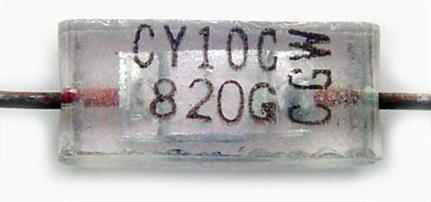Miscellaneous Dielectrics
Glass:
Glass is seldom seen in industrial electronics but is more popular in big-dollar military and aerospace applications. Glass capacitors are in the Mars Rovers for example. Glass capacitors are seriously expensive, I have seen list prices in the 10s to 100s of dollars. The main attractions include negligible aging rate, very high radiation tolerance, a very wide temperature range (-75 to +200C for some), and an overall ruggedness and reliability. Glass capacitors go back to WW2 when mica capacitors became temperately unavailable or at least in short supply. They are now widely used in satellites and space probes, plus Rovers and the Shuttle. It is claimed there has never been a failure in a space application.
Glass capacitors can be roughly divided into two general classes, the low-K glasses with properties similar to film capacitors, and the medium-K glasses with properties similar to the medium-K ceramics. The low-K types are available to about 0.01 uF. They have a fairly low and predictable temperature coefficient, negligible voltage coefficient, and reasonably low dissipation factor. The high-K types are available to about 0.1 uF. They have a much higher temperature coefficient, a significant voltage coefficient (varies by type), and a higher dissipation factor (varies by type). I have not seen them in surface mount, but that could change.
Recently, AVX has introduced the CY31 series of glass capacitors with much improved performance. AVX claims a C0G temperature drift, with a dielectric absorption and dissipation factor as good or better than polystyrene. They are much cheaper than old styles, around $6 in 1000s. I have tried to find other companies who make fixed glass capacitors. I have seen a number of lists (EEM is one) and search engines that show a number of glass capacitor vendors. After tracking them down however, I found that they are really porcelain, glass-encapsulated ceramics, glass trimmers, or nothing related to glass at all. Even glass-sealed paper-oil capacitors were once somewhat common. Corning and Vitramon made glass capacitors at one time however. Corning was advertising glass capacitors in the 1950s.
Companies that advertise glass capacitors include:
Mica:
Mica is any one of 28 minerals, all of which have aluminum silicate as their main building block. Most are very rare, and only a few have commercial value. For those that do however, applications abound. Micas in general, tend to be tough, heat and chemical resistant materials. The one preferred for capacitors is a selected form of muscovite mica (potassium aluminum silicate, K2Al4Al2Si6O20(OH)4) variously called "India ruby mica" or "ruby muscovite mica". Like other micas, muscovite mica splits easily into thin, tough sheets. To make capacitors, the plates are usually plated with silver. Mica was the first mass-produced capacitor, dating back to before 1920. Over the years, mica has been replaced by newer capacitors in many applications, but it still has many important niches.
The best ruby muscovite mica capacitors have a low dissipation factor at high frequencies (but poor dielectric absorption) and are usable up to 1 GHz. Their stability over time is one of the best of all capacitors and they have a fairly low temperature drift. This varies by type and size, however. Many mica capacitors are guaranteed to less than +90 ppm/C, but others can be +200 ppm/C or even more. Mica capacitors are best known for general-purpose RF applications including filters and oscillators, although C0G ceramic, with smaller size and lower temperature drift, has largely replaced them. Micas are also used in high-power and fast-pulse applications such as transmitting capacitors, high-energy storage, and snubbers. Mica is very popular for high-voltage applications because its voltage breakdown and corona resistance are better than most other dielectrics. Mica capacitors have very good temperature resistance, limited mostly by packaging; even common ones are usually rated from -55 to +125C. A very few are available for use up to 300C, with customs to 400C. They are available from <1 pF to at least 20 uF and to at least 15,000 volts. Mica capacitors are available in SMD.
Like anything else dug out of the ground, mica varies significantly in its properties, and may contain a variety of metallic impurities (iron etc.). If your application is critical, make sure you know exactly what you are getting. Temperature drift can be quite variable part-to-part, unless guaranteed. Hams tell me to beware of micas made in third-world countries where quality control may be poor. Ruby mica RF-quality capacitors generally have dissipation factors well under 0.1% below 1 MHz. Capacitors like these are usually only available in small sizes, to about 0.01 uF. This because the best quality mica is no longer available in large size plates. If you need a large high-performance mica capacitor, you may have to look to old surplus parts. The small RF micas are commonly referred to as "silver mica" or "silvered mica" capacitors, both because of the silver metallization and mica´s silvery appearance. Mica is found around the world, including the US, but the best ruby mica is only found in India to my knowledge.
ASTM-D-351 is a complex system for grading mica based on visual defects such as color, air inclusions, and other flaws that degrade electrical properties. A rating of V-1 is best, and V-12 is worst. V-1 through V-4 is generally considered to be "capacitor-grade". Also see ASTM-D-748: Mica For Fixed Capacitors.
Large-value high-voltage capacitors are made from "reconstituted mica", which is made from pieces of lesser quality capacitor-grade mica. These are made into sheets bonded with another dielectric, such as polyester, silicone, or epoxy, depending on the temperature resistance required. Reconstituted mica capacitors generally have dissipation factors between 0.1% and 1% to 1 MHz over -50C to 100C.
Muscovite mica is usable to about 500C. Another form of mica called phlogopite mica (potassium magnesium aluminum silicate) is usable to about 1000C, but has poorer electrical properties. A synthetic fluorine-modified form of phlogopite, fluorophlogopite, has electrical properties closer to muscovite, and thermal properties even better than phlogopite. Fluorophlogopite is used in many refractory products, but is not presently used in any capacitors that I know of. It may not be available in large enough plates.
Mica capacitors are often used for high stability calibration capacitors that have temperature stability is the ppm/C region. My instinct would be to go with C0G capacitors, but they may not have the long-term stability.
Companies that advertise mica capacitors include.
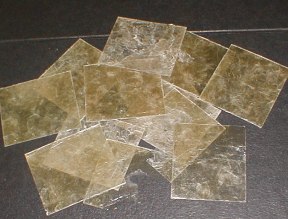

Paper and Oil:
You're probably as likely to find a paper capacitor in your TV set as you are to find a picture tube. Paper and paper-in-oil (PIO) capacitors were probably the second type to be mass produced. The first being mica. By film standards they had poor leakage, poor temperature drift, poor dissipation factor. Their capacitance tends to increase with time, probably because of moisture absorption. The first were small, low voltage parts common electronics use. These are gone now. However, oil-impregnated paper capacitors live on as high-capacity (hundreds of uF, at least), high-voltage (>100,000 volts, at least) power capacitors. Some capacitors have paper-oil with polyester or polypropylene film. High dissipation factor means that oil-paper capacitors are best suited for DC applications or for AC applications with limited duty cycles, like motor starting. Continuous duty AC applications (motor run, power-factor correction) are best left to large polypropylene capacitors.
Oil is necessary for reliability in high-voltage film capacitors where it displaces air and moisture, and helps prevent corona and voltage breakdown. Traditionally, the oil was held in a paper separator, but a new method called "hazy-film" does away with the paper. With hazy-film, the film is roughened to allow it to hold oil on its surface. In recent years, improved dry-film capacitors have seen increased usage at the low end of the high-voltage range (<2000 volts).
Small-value (a few uF and below) paper-oil capacitors have gained favor for high-end audio applications for some reason.
Paper-in-oil capacitors had a very long run, from maybe the 1920s to at least the 1980s. A wide variety of oils were used (plus wax, petroleum jelly, and maybe other things). There were long chain paraffin oils, chlorinated and brominated compounds of every sort, and all kinds of additives.
Porcelain:
Porcelain capacitors are rather similar to C0G ceramics. They are used in RF and microwave applications for their very high Qs. Temperature drift is usually specified as +90 ppm/C (P90), but can be found with TCs of +-30 ppm/C, and even +-15 ppm/C. In fact, some are referred to as "NP0 (or C0G) porcelains". They are commonly available in SMD.
Companies that advertise porcelain capacitors include:
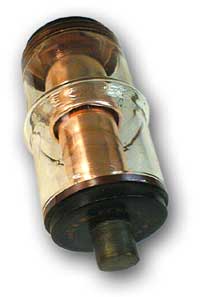
Air Variable Capacitors:
Air variable capacitors (AVC) were once used as the tuning element in almost every radio, but electronic tuning schemes have largely eliminated them in modern radio equipment. Although AVCs are not made in the numbers they once were, they have found a number of important niche applications that call for their unique properties. These include RF test equipment, ham radio gear (including antenna tuning) , nuclear magnetic resonance imaging machines, and controlled plasma etch equipment used in semiconductor fabrication.
Construction details vary. The insulating materials may be silicone-treated steatite, or a number of plastics. Some have bronze bushings, others have ball bearings. Most have aluminum plates, but other metals can be used for better current carrying capacity, or better temperature stability. Other options include silver plated plates, high-current rotor contacts, various capacitance-vs-rotation curves, multiple sections, built-in trimmers, and gear reduction drives. AVCs are available to at least 1500 pF, and with operating voltage ratings to over 10 kV.
Companies that advertise air variable capacitors include:
Single-Layer:
Single-layer SMD capacitors are used in RF and microwave applications, to at least 50 GHz, for their low inductance, and low ESR. C0G ceramic and porcelain are typically used for tuning and filtering, while higher K (and lower quality) dielectrics are often used for less demanding applications, like dc blocking.
AVX (and others) makes single-layer SMD microwave capacitors by the vapor deposition of advanced dielectrics on glass substrates. These include silicon dioxide, silicon nitride, and tantalum pentoxide. They are claimed to have characteristics better than porcelain and C0G capacitors, including lower ESR, superior power handling capability, and low and consistent inductance. Capacitors made of silicon dioxide grown on silicon chips are known as MOS capacitors. The list below is far from complete. Anyone that makes ceramics is likely to make single-layer capacitors.
Companies that advertise single-layer capacitors include:

Vacuum and gas:
Vacuum and pressurized gas dielectric capacitors are used in applications that require characteristics such as working voltages in the 10s of thousands of volts, RF currents in the hundreds (or even thousands) of amperes, and good ruggedness and overload capacity. Capacitance is limited to a few thousand pF. They come in both glass and ceramic envelopes, some are water-cooled. Both fixed and variable types are available. Gas capacitors often use SF6, but some use N2, helium, and other gases or mixtures of gases. Gas capacitors are commonly used for HV calibration and capacitive voltage dividers.
Gas "micro-gap" capacitors have been patented for microwave work, but I have never seen commercial parts.
Companies that advertise vacuum and gas capacitors (new and used) include:

Silicon capacitors:
Silicon capacitors are something new. They are made from the pf range to 3.3 uF. They feature a wide temperature range, to 250C for some, operation into the 10s of GHz, and excellent temperature stability. They are most similar to C0Gs, but wider temperature range, lower ESL, and larger sizes. The same technology is used to make entire passive networks.
Companies that advertise silicon capacitors include:
Multilayer Organic Capacitors:
AVX has an obscure technology called MOL, multilayer organic capacitor. Its claim to fame is a dielectric absorption much lower than any other capacitor, even Teflon. Recommended for RF applications into the GHz. Small sizes, 0.1 to 4.3 pF. In SMD only. It would be great for some analog applications, like sample-and-holds, if they came in larger sizes.
Sulfur hexaflouride:
SF6 has a very high voltage breakdown compared to air and is very good at arc quenching. It is sometimes used in very high-voltage capacitors, transformers and circuit breakers. Sometimes used with other gases. It is expensive and has other problems so other gases are under investigation. SF6 is often used in calibration capacitors where it allows for a size reduction of the capacitor.
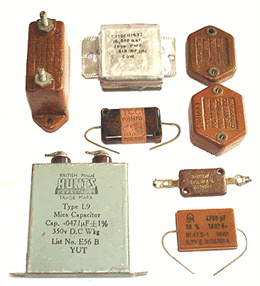
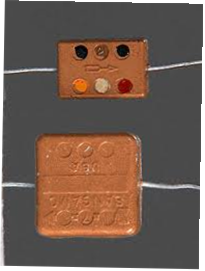

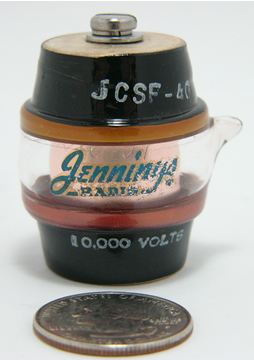
http://www.us.schott.com/epackaging/english/download/index.html Schott has something they call glass-ceramic NP0 for high-voltage capacitors. They claim very good temperature stability that can be further tweaked if desired.
http://www.susco.com/ SUSCO imports SAHA brand micas from India. Site not functional right now (2015).
http://www.semco-usa.com/ Seems to be part of C-D now.
http://www.electrocube.com/ No longer found on their website.
http://www.ceramite.com/ Now part of Vishay (like who isn't). Micas not shown.
http://www.teledynereynolds.com/product/7micacapacitor/ Look for graphs on dissipation factor and other properties.
http://www.knowlescapacitors.com/dilabs/en/gn/home Knowles now has Dielectric Laboratories, Novacap, Syfer, Voltronics.
http://www.venkel.com/ Venkel has a lot of stuff.
http://www.jenningstech.com/ Jennings also makes a wide variety of vacuum relays and other devices for high-voltage, high-current applications.
http://www.tedss.com/Capacitors/Browse/vacuum This is a surplus place with all kinds of stuff.
http://www.glvac.com/ Kunshan GuoLi Vacuum Electric Co.
http://www.sovtube.com/20-vacuum Various Russian electronic parts.
http://cardwellcondenser.com/ They still make the old Hammarlund and Johnson part numbers.
http://www.skyworksinc.com/ They make a bunch of GHz products.
